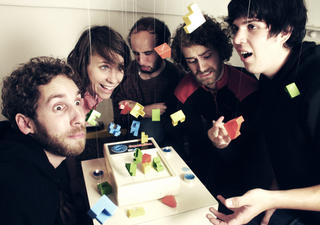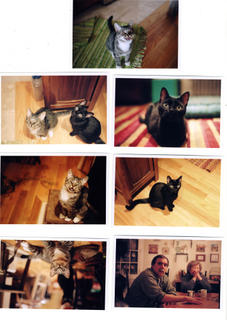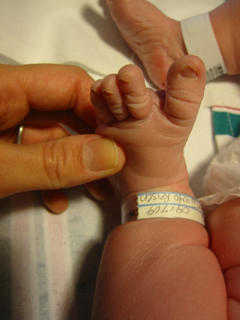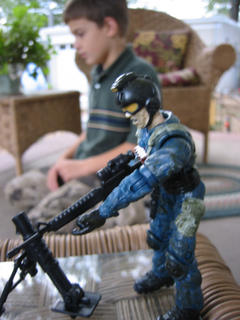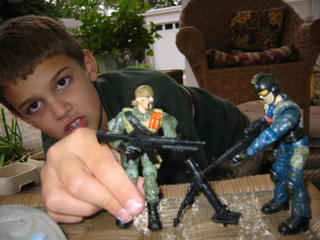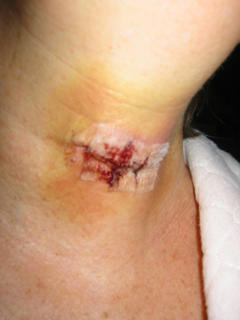Wednesday, October 26
Friday, October 21
Thursday, October 20
Tuesday, October 18
Thursday, October 13
Monday, October 10
"elimation communication"
NY TIMES ARTICLE: A Fast Track to Toilet Training for Those at the Crawling Stage...
From birth, the reasoning goes, infants are aware of their needs to eliminate, and although their muscles are not developed, they can soon learn to go on cue. Conversely, by relying on disposable diapers, modern parents are in effect teaching babies to ignore the signs that they have to go, making potty training at a later age more difficult.
Ingrid Bauer, author of "Diaper Free! The Gentle Wisdom of Natural Infant Hygiene" (Natural Wisdom Press, 2001), believes it is easiest to begin toilet training in the first six months. To start, parents are taught to hold the baby by the thighs in a seated position against their stomachs and to make an encouraging hiss or grunt. With practice, parents learn their child's rhythms; some parents sleep next to their children and keep a potty at arm's reach, or diaper their babies overnight.
For families who practice the technique, the advantages are many: savings in the cost of diapers, which can reach $3,000 a child; less guilt about contributing to the 22 billion disposable diapers that end up in landfills every year; no diaper rash, and a nursery that doesn't reek of diaper pail. They also note that age 2, a common age for toilet training, is a time of notorious willfulness and a terrible age to start teaching any child anything.
From birth, the reasoning goes, infants are aware of their needs to eliminate, and although their muscles are not developed, they can soon learn to go on cue. Conversely, by relying on disposable diapers, modern parents are in effect teaching babies to ignore the signs that they have to go, making potty training at a later age more difficult.
Ingrid Bauer, author of "Diaper Free! The Gentle Wisdom of Natural Infant Hygiene" (Natural Wisdom Press, 2001), believes it is easiest to begin toilet training in the first six months. To start, parents are taught to hold the baby by the thighs in a seated position against their stomachs and to make an encouraging hiss or grunt. With practice, parents learn their child's rhythms; some parents sleep next to their children and keep a potty at arm's reach, or diaper their babies overnight.
For families who practice the technique, the advantages are many: savings in the cost of diapers, which can reach $3,000 a child; less guilt about contributing to the 22 billion disposable diapers that end up in landfills every year; no diaper rash, and a nursery that doesn't reek of diaper pail. They also note that age 2, a common age for toilet training, is a time of notorious willfulness and a terrible age to start teaching any child anything.
BODY WORLDS
What is plastination?
Plastination is a technique that preserves bodies using special, clear plastics that enable us to view organs and systems under the skin. It involves a vacuum process whereby the body's water and fat are replaced with reactive plastics. The plastic is initially pliable, enabling the bodies to be placed in different life-like positions, and then hardens after infusion. It takes 1,500 hours to transform a cadaver into a full-body plastinate. Organs are identical to their pre-preservation state down to the microscopic level. Plastinate specimens are dry and odorless.
Actor's comments page:
“Very well done! It made me very hungry.”
Danny DeVito, US actor
Los Angeles 2004
Plastination is a technique that preserves bodies using special, clear plastics that enable us to view organs and systems under the skin. It involves a vacuum process whereby the body's water and fat are replaced with reactive plastics. The plastic is initially pliable, enabling the bodies to be placed in different life-like positions, and then hardens after infusion. It takes 1,500 hours to transform a cadaver into a full-body plastinate. Organs are identical to their pre-preservation state down to the microscopic level. Plastinate specimens are dry and odorless.
Actor's comments page:
“Very well done! It made me very hungry.”
Danny DeVito, US actor
Los Angeles 2004
